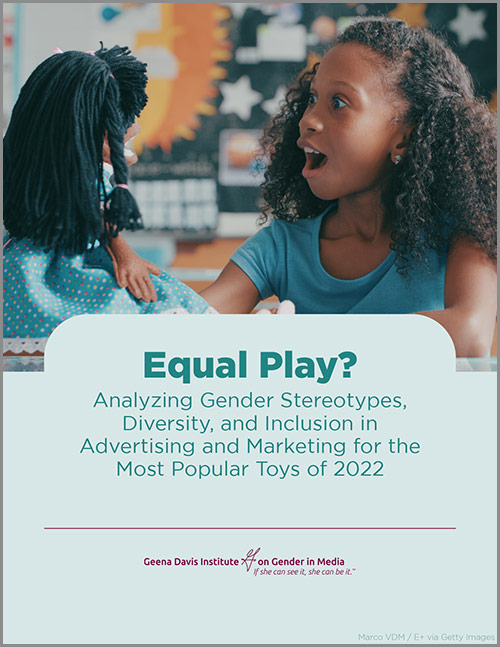Toys aren’t just for fun. Toys and games help children develop cognitively and impart a broad range of social, emotional, and physical skills. Although it has varied over time, children’s toys have been coded in ways that clearly convey expectations about distinctively gendered interests, tastes, and preferences, and they are even segregated into separate and clearly identifiable aisles in toy stores. Recently, on social media and in other media, parents have expressed concerns about the socializing power of children’s toys and questioned whether the messages the toys and their marketing convey limits children’s imaginations and experiences. In this report, we investigated whether advertisements that market today’s most popular toys continue to rely on gender stereotypes or move beyond the gender binary. We also examined representation in terms of diversity and inclusion based on who was featured in the advertisements.
Key Findings
To carry this out, we conducted a content analysis of 175 advertisements for toys listed as “best selling” by the top-three toy retailers (Target, Walmart, and Amazon) as of March 2022. The results suggest gender stereotypes remain very prevalent in popular children’s toys. For example:
- Girls made up about 56% of actors in advertisements for best-selling toys in 2022.
- Toys marketed to girls were 18 times more likely to be shown demonstrating nurturing or domestic skills than toys marketed to boys.
- Advertisements featuring toys marketed to boys were predominantly for cars, sports equipment or games, and toy weapons, with louder and faster music and more masculine language used in these ads, compared with ads for toys marketed to girls.
- Seventy-five percent of toys that were played competitively or violently were played with by boys.
- Kids of all genders in toy advertisements were depicted playing with basic learning and STEM learning toys at similar rates.
Photo credit: Marco VDM/E+ via Getty Images

